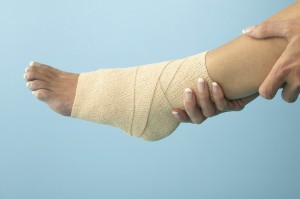Elbow Dislocations
The elbow becomes dislocated when the joint surfaces are separated. With a complete dislocation, the joint surfaces are separated completely. The joint surfaces are only partly separated with a partial dislocation, also called a subluxation. The elbow is a hinge joint as well as a ball-and-socket joint.
Injuries and dislocations to this structure can affect the normal range of motion. Elbow dislocations are either simple or complex. With simple dislocations, there is no major bone injury. With complex dislocations bones and ligaments are injured.
What causes an elbow dislocation?
The most common reason an elbow is dislocated is when a person falls onto an outstretched hand. There is considerable force sent to the elbow when the hand hits the ground. Most often there is a turning motion in this force and this can rotate and put the elbow out of its socket. Elbow dislocations often occur during car accidents, when the passenger reaches forward in an attempt to cushion the impact.
What are the symptoms of an elbow dislocation?
With a complete elbow dislocation, there is considerable pain and obvious deformity. With a partial dislocation, the joint appears fairly normal. However, there usually is pain and bruising on the inside or outside area where ligaments have been torn or stretched. If the ligaments never heal, partial dislocations can recur.
How is an elbow dislocation treated?
Elbow dislocations require immediate treatment and are emergency injuries. The goal of treatment is to return the joint to its normal alignment and restore function of the arm. The orthopedic specialist can realign the elbow joint using a reduction maneuver. Once the joint is reduced, an immobilizer is required for two to three weeks.
Physical therapy is often required to restore full range of motion. For complex dislocations, surgery is often required to restore bone alignment and repair ligaments. After the operation, the elbow will be protected with an external hinge device to prevent further dislocation.
Shoulder Dislocations
The shoulder is susceptible to dislocation because it can turn in many directions. A partial dislocation of the shoulder is also called a subluxation. This means the head of the upper arm bone is partially out of the socket. With a complete dislocation, the structure is all the way out of the socket.
What are the symptoms of a dislocated shoulder?
Most shoulder dislocations lead to swelling, bruising, numbness, and weakness. Many times, a dislocation results in torn ligaments or tendons or damaged nerves. It is possible for the shoulder to dislocate downward, forward, or backward.
What is the treatment for a dislocated shoulder?
Many times the shoulder can be reduced. This is where the surgeon places the ball of the upper arm bone back into the socket. After the reduction, the orthopedic specialist will immobilize the shoulder in a sling or device for a few weeks. Ice is recommended 3 to 4 times a day to reduce pain and swelling. Also, the doctor will prescribe rehabilitation exercises for you to help restore the shoulder’s range of motion and strengthen the muscles. If recurrent dislocations occur, surgery is sometimes necessary.
Hip Dislocations
The hip becomes dislocated when the head of the thighbone slips out of the socket in the hip bone. For around 90% of people, the thighbone is pushed out of position in a backwards direction. This is known as posterior dislocation. Rarely, the thighbone slips out of socket in a forward direction. This is called an anterior dislocation.
What causes hip dislocations?
The hip joint is formed of a ball-and-socket construction. The ball is the head of the thighbone (femur) and it fits into a cup-shaped socket in the pelvis. This joint has a great deal of stability and moves freely. The most common reason for a dislocated hip is motor vehicle accidents. Falls can also result in dislocated hips.
How is a dislocated hip treated?
With a dislocated hip, the orthopedic specialist must administer an anesthetic or sedative and then position the bones back into proper position. This is called a reduction and surgery is often required. The surgeon will make an incision over the hip region in order to reduce the hip.
It takes up to three months for a hip to heal once it has been dislocated. Many times it is necessary for the patient to be in traction for a short period of time. Special controlled exercises are prescribed to help the hip regain strength and function.



